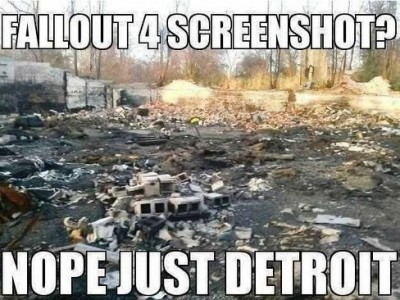

Reggie steps down from Gamestop board, and a look at why the retailer is failing
Former Nintendo of America president Reggie Fils-Aimé has stepped down from Gamestop’s board of directors.
Reggie had only joined the company last March, however, he is part of a group of eight directors planning to leave the Funko Pop retailer after its annual shareholders meeting in June. Kathy Vrabeck, formerly of Acticision, also plans to leave, though her departure had already been announced in January. Fils-Aimé meanwhile still maintains a position on the board of Spin Master toys, and has signed on as a strategic advisor for Rogue Games.
It’s well known that Gamestop has been circling the drain for quite a while now. Wall Street hedge funds have been attempting to short sell the stock in hopes of profiting off the company’s misfortunes. A move which triggered Stonks War (which I’m now calling it) earlier this year with subreddit Wall Street Bets.
So the question is, why is Gamestop failing? The obvious answer seems to be digital sales are eclipsing physical releases. Which is certainly true to a point. However, about half of all console games sold are physical releases. Indeed a sizeable number of gamers still prefer them. Especially in wake of recent news regarding digital store closures on several PlayStation platforms. So there is indeed a sizeable market out there for good old fashioned discs and cartridges, and people still need a place to buy them. So you’d think those retailers would be seeing some downturn, but not to this degree.
The short answer is, well, like many things in life, it’s complicated. While we can only speculate without knowing the exact details of their internal operations, there’s likely a variety of factors at play here.
First off, while there’s still a market for new physical releases, I think digital has eaten into the used game market. The fact is that a lot of older games do indeed sell for less on digital storefronts than they do for physical releases. Making them a much more tempting impulse purchase. It’s hard to compete with a shop that needs no shelf space and can thus afford to do frequent sales, often at deep discounts.
Gamestop is primarily, for all intents and purposes, a pawn shop. The margins on a new release aren’t that great for retailers. Used to be about $5 per game according to an old acquaintance of mine who runs a computer shop. That’s before operating expenses. So to get around this, Gamestop’s strategy was to buy pre-owned games from their customers and resell them. The notoriously chintzy store credit they offer for trade-ins has become a meme in and of itself. So a customer trades in a game that’s still retailing for $60, the store then gives them something like $10-$15 in credit, then resells the game for $50. So now you’re making $35-$40 on each unit sold rather than $5. It’s utterly brilliant. There’s a large subset of bargain hunting customers which will always prefer the cheaper option. Which is ironically the more profitable one for the retailer. And they don’t have to give any of that to the publishers. This is why Sony and Microsoft had their panties in such a bunch over used game sales back in the early 2010s.
But if those games are cheaper on digital, there’s little incentive to buy used. One could also argue that those who buy physical nowadays are more likely to be collectors. So they’re less likely to trade in games when they’re done with them. There’s also increasing competition in the used market from online marketplaces and retro retailers. The latter of which tend to specialize in carrying rarer stock that collectors are interested in, rather than dozens of copies of Call of Duty. Furthermore, they’ve also lost out on lucrative post sale, uh, sales like microtransactions, which put digital retailers at a huge advantage.
The other problem is their retail model. Now, I’m going to go on a bit of a tangent here and talk a bit about fast food. I promise I’m going somewhere with this.
Ever wonder why most communities don’t have very many McDonald’s locations? There’s a few reasons for this. First of all, it’s very expensive to start up a restaurant. Corporate provides basic training and the location, but the franchise owner has to provide all the equipment, staff, etc. Think about how many appliances you need to run a burger joint? It’s a lot, and it’s not cheap. Head office also keep a tight leash on where stores can be located. They’re often on busy street corners and other high traffic areas to maximize the flow of customers. They’re also kept far enough apart from other locations so each restaurant won’t cannibalize business from another. McDick’s has this down to a highly precise science, which is why each location is incredibly profitable despite the low cost of the food. It’s all about that volume.
Now, compare this to Subway. Everyone’s favourite gym mat breaded sandwich shop with the creepy spokesman. Which I now kinda want for lunch. Guilty pleasures. Anyway, Subway has the most locations of any fast food chain in the world. Why? Because the franchise startup costs are incredibly low. What do you need to open one? Bread oven, toaster, couple of fridges. Most are only staffed by only two or three people per shift compared to a over a dozen at McDonald’s. Corporate also doesn’t regulate where restaurants can be located. So you often find them in suburban strip malls and other locations where rent is cheap. It’s actually one of the easiest franchises for perspective entrepreneurs to get into, and that’s part of the problem.
You see, because they’re so cheap and easy to open, Subways multiply like busty neoprene statues in a weeb’s bedroom. Now you may think more locations would equal more money. The problem is these strip malls don’t usually have a lot of through traffic. How often have you been in a Subway that’s busy? I mean busy like McDonald’s is busy. Probably never. The thing is, these locations tend to be a bit off the beaten path. They’re also usually competing with other food options in the same plazas. Compared again to McD’s, which are usually stand-alone locations. On top of that, you often get multiple Subways bunching close together in particular areas where traffic is high enough. There’s literally two within walking distance of my office, which is out in a light industrial district, not a busy downtown core. Given the other aforementioned meal options, one restaurant is going to inevitably cannibalize the other’s sales. The one never seems to have any customers in it. I don’t know how they survive.
Since profit margins at most restaurants in general are thin, they need to make up on volume. Now, the Subway model can work for some chains. Tim Hortons’ is a good example. However, again these locations are typically stand-alone with an emphasis on fast drive-thru service. They also have highly streamlined menus that cater to a commuter crowd. In other words, they do have enough customers to sustain so many locations. Subway’s though have the deck stacked against them.
So what does this have to do with Gamestop? Everything.
You see, they have the exact same problem. We’ve already established that their profit margins are pretty low on new-in-box releases. You’ll also notice that most locations are centered around the same strip malls as your typical Subway. This wasn’t always the case. When I was a kid back in the magical 1990’s, most Electronics Boutiques (their Canadian subsidiary) were inside large shopping malls. Typically those malls had high traffic and didn’t have any other retailers selling games. Maybe like a Sears, but nobody went to Sears to buy the latest copy of Streets of Rage. However, their rapid expansion in the 2000’s found them located just about everywhere. Often too close to each other. Not only that, but in the same plazas as big box competitors like Walmart and Toys-R-Us.
Walmart is a general store, in case you haven’t noticed. Their aim is to be a one-stop-shop for everything. You go there to pick up some groceries, maybe a new set of towels, and there’s the well stocked electronics section between those two. Your average Wally World sells all the same games, consoles, and accessories that a Gamestop does. All of which cost the same. It also provides the exact same level of service. Sure, your average Gamestop usually has at least one person on staff that’s passionate about gaming. But that doesn’t really matter to most casual consumers. Walmart also doesn’t try to aggressively up-sell you on disc protection and memberships either. Nor does Amazon or Best Buy. Like a lot of mall staple boutique stores, they can’t compete any longer with the big box or the online catalogue giants.
If Gamestop wants to survive as a brick & mortar retailer, they’re going to have to drastically downsize. Close stores, and move the remaining ones into high traffic areas. Preferably far enough away from the likes of Walmart. Actually, they may find a niche in commuter hubs. People who are looking to grab a game for the evening on their way home from work. Just a suggestion they can have for free. They also need to provide a higher level of service. Which means both training and treating their staff better. Something the company is infamously bad at. Maybe they can even get into publishing by making physical releases for smaller games. Much like Limited Run Games does.
Even then, the industry is already moving head first into a digital future. Both Sony and Microsoft now have cheaper versions of their 9th gen consoles which don’t use physical media at all. With Sony in particular, there’s literally no difference between their two systems aside from one not having a Blu-ray drive. And general consumers will tend to stick with the cheaper option when all else is equal. That’s assuming the PS5 ever becomes available to general consumers. Basically, if physical sales collapse, I don’t think Gamestop can survive on all their Think Geek tat alone. There’s only so many people who want Pokemon handbags and more of those ugly Funko Pops.
It will be interesting to see what happens at their earnings meeting early this summer. But with even an industry titan like Reggie bailing after only a year on the job, safe to say nothing good.


